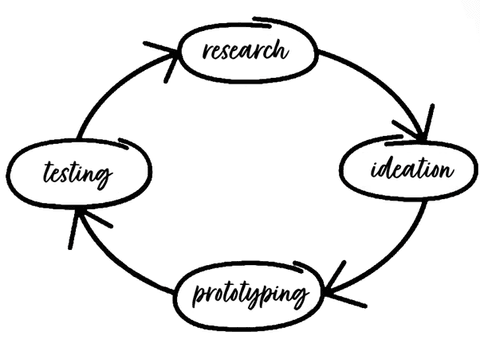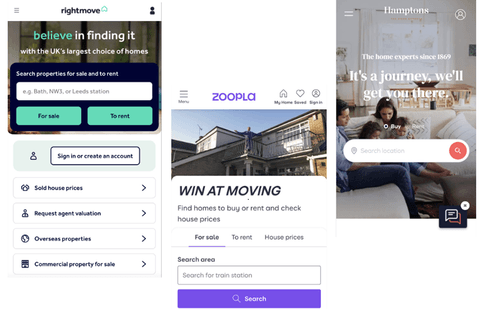What is UX and Why is it Important for Your Business?
By Graham Dell, SEO Strategist
At Bluesoup, our team is dedicated to providing bespoke marketing services, continuously monitoring performance and adapting strategies as needed.
However, while marketing is essential for attracting potential customers to your website or app, it’s the User Experience (UX) that plays a key role in converting those visitors into paying customers — and, ideally, loyal brand advocates.
In this article, we’ll look at how UX plays a key final step in the conversion process and why it is worth spending the time to get it right.
Contents:
How UX fits into the wider customer journey.
To fully appreciate UX, it’s important to differentiate it from other related concepts:
- Customer Journey: This is the entire experience a customer has with your brand, from initial awareness to ongoing engagement.
- UX (User Experience): UX focuses on how a user interacts with your product or service and their overall feelings about it.
- UI (User Interface): UI refers to the visual elements of a digital product — buttons, icons, layouts, etc.
Think of a restaurant experience:
- The customer journey encompasses the entire dining experience, from booking a table to paying the bill.
- UX
relates to how easy and enjoyable it is for the customer to choose and order their meal.
- UI is the design of the menu — how clear and visually appealing it is.
Why UX matters for your business.
Good UX isn’t just about making your website or app look attractive. It’s about creating a seamless, enjoyable experience that leaves your users satisfied. In turn, happy users lead to a more successful business. Here’s how:
- Reduces Frustration: Well-designed UX minimises user pain points and creates smooth, easy interactions.
- Increases Engagement: Engaging experiences encourage users to spend more time on your site or app.
- Drives Conversions: By making it easier for users to find what they need and complete desired actions, UX directly impacts conversion rates.
Take Amazon’s "Buy Now" button as a prime example. Its simplicity and clarity streamline the purchasing process, driving higher sales.
The core elements of UX.
Effective UX design is built on several key components:
- Usability: Can users easily navigate your product or service? Intuitive and efficient design is essential.
- Accessibility: Ensure that everyone, including individuals with disabilities, can use your product. Considerations like colour contrast, alt text for images, and keyboard navigation are essential.
- Interaction Design: Does your product feel intuitive and responsive? Do interactions flow naturally?
- Information Architecture: Is your content organised logically and easy to find? Users should be able to locate information quickly.
- User Research: Are you addressing real user needs? Understanding users’ behaviours, pain points, and preferences is vital to great UX design.

Understanding your users: The power of UX research.
User research is crucial for designing effective user-centered designs. Some key methods include:
- User Personas: These are fictional characters based on real data, helping designers understand demographics, behaviours, and motivations.
- User Interviews & Surveys: These help gather insights from users about their needs, preferences, and pain points.
- Usability Testing: Observing users as they interact with your product can reveal pain points and areas for improvement.
There are a variety of online tools that can assist in gathering valuable user data.
The importance of simplicity in UX.
In UX design, clarity and simplicity are key. Users should never feel overwhelmed or confused. Aim for intuitive navigation, clear calls to action, and a clean, minimalistic layout. A straightforward, user-friendly design will encourage more people to engage with your product or service.
Usability heuristics: Jakob Nielsen’s rules.

Jakob Nielsen is a well-respected figure in the field of User Experience. His usability heuristics provide valuable guidelines for creating user-friendly interfaces, including principles such as:
- Visibility of system status: Keep users informed about what’s happening.
- Match between system and the real world: Use familiar language and concepts.
- User control and freedom: Allow users to undo actions and navigate freely.
- Consistency and standards: Maintain consistency in design and functionality across your product or service.
- Error prevention: Design to prevent errors and provide clear messages when they do occur.
Bringing the real world online.
In UX design, we often rely on familiar symbols to signify actions. For instance, the floppy disk icon used to represent "Save" in software is a great example. Even though floppy disks are now outdated, the icon is universally recognised. This connection between real-world objects and digital functions helps users navigate with ease.
Why websites often look the same (and why that’s a good thing).
Websites often follow familiar patterns because users have come to expect certain elements in specific locations. This predictability reduces cognitive load and helps users feel more in control, leading to a smoother, more enjoyable experience – and, ultimately, an increase in conversions.

Accessibility: Designing for everyone.
A crucial part of UX is designing for accessibility. This ensures that your products are usable by everyone, including people with disabilities. Key accessibility considerations include:
- Colour contrast: Ensure readability with sufficient contrast between text and background.
- Alt text for images: Provide descriptive text for images so they can be interpreted by screen readers.
- Keyboard navigation: Ensure users can navigate your product using just a keyboard.
- Informative link text: Use clear, descriptive text for links.
- Text size and alignment: Optimise text for readability.
- Use of lists: Use numbered and bulleted lists to structure content clearly.
Final thoughts.
UX is about putting the user at the centre of your design. Here are some principles to remember:
- Keep it simple: Prioritise ease of use and clarity.
- Make it real: Base your designs on real user needs and data.
- Apply common patterns: Use familiar design conventions to enhance usability.
- Test, iterate, and improve: Constantly test and refine your design based on user feedback.
By focusing on these principles, you can create exceptional user experiences that drive business success, ensuring your marketing budget delivers better results and increased sales.
Speak to the team at Bluesoup to find out how we can help you optimise your Users' Experience.